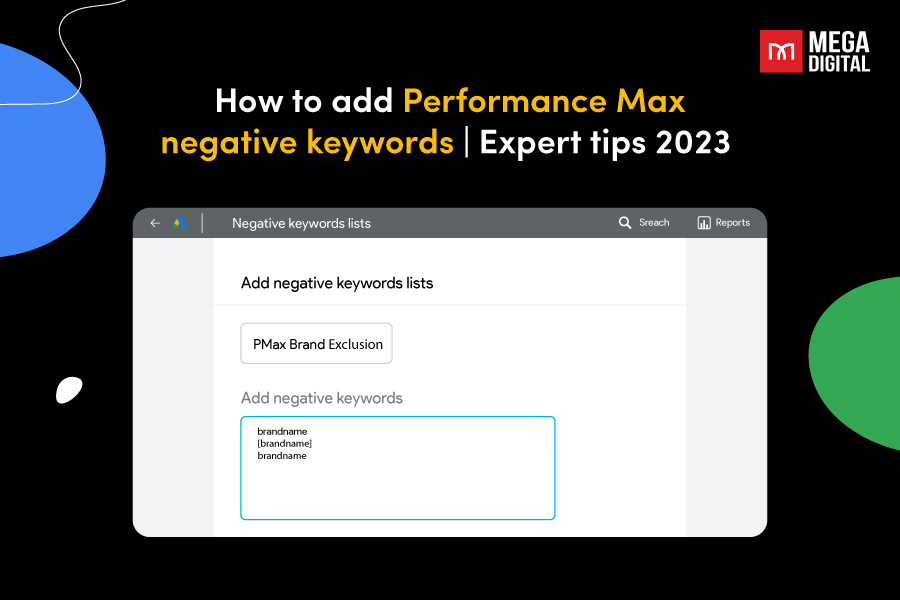The ultimate aim of digital advertising is to maximize return on investment (ROI). This is where value based bidding comes in, providing a strategic approach that goes beyond standard cost-centered techniques. In this blog, we’ll examine its definition, why it matters, and how to use its potential to leverage your online advertising campaigns.
- What is value based bidding in Google Ads?
- How value based bidding works?
- When should you use value based bidding strategies?
- The benefits and limitations of value based bidding strategy
- How is value based bidding different from other bidding strategies?
- How to set up value based bidding in Google Ads?
- Value based bidding best practices
- Value based bidding frequent mistakes to avoid
What is value based bidding in Google Ads?
Value based bidding is one of the 8 Google Ads automated bidding strategies, which involves adjusting your bids for keywords or placements based on the estimated value of the traffic they generate. This value can be defined in various ways, such as the expected return on ad spend (ROAS), customer lifetime value (CLV), or profit margin.
There are two main bidding tactics in value based bidding strategy:
- Maximize conversion value: aims to maximize the total conversion value (revenue or profit) from your advertising campaigns while spending your specified budget.
- Target ROAS (return on ad spend): focus on driving as much conversion value as possible at a particular ROI (return on investment)
How value based bidding works?
Here’s a brief explanation of how value based bidding typically operates: Advertisers assign a specific value or monetary amount to different conversion actions. This value could be based on factors like the expected revenue, profit margin, or customer lifetime value associated with each conversion. The bidding strategy then optimizes bids to prioritize keywords or placements that are more likely to generate higher-value conversions.
Example:
Imagine you’re running an e-commerce website selling electronics, and you have two products: Smartphones and phone cases. Here’s how value based bidding might work for your ad campaign:
Define Conversion Value:
- A purchase of a smartphone is worth $500 to your business.
- A purchase of a phone case is worth $20.
Assign Conversion Values:
- Smartphone purchase: $500
- Phone case purchase: $20
You’re using the Target ROAS bidding strategy, and you want a ROAS of 500% for smartphone sales. You’re willing to bid more for smartphone-related keywords to achieve this ROAS target. For phone case-related keywords, you set a lower bid since the conversion value is lower.
With Target ROAS bidding, your ad platform automatically adjusts your bids for different keywords or ad groups to achieve a ROAS of 500% for smartphone sales.
- If a click on a smartphone-related keyword is likely to generate a conversion with a value close to $500, the bid might be increased to ensure a competitive position in the auction.
- For phone case-related keywords, the bid adjustments would be based on the lower conversion value.
In this example, value based bidding ensures that you allocate higher bids to keywords and ad placements that are likely to generate more revenue and profit for your business, while being more conservative with lower-value conversions.
When should you use value based bidding strategies?
Businesses should consider using value based bidding strategy when their goal is to maximize the return on investment (ROI) and overall profitability of their digital marketing efforts. This approach is beneficial when dealing with products or services that have varying levels of profitability, or when targeting specific audience segments that are more likely to generate higher-value conversions.
The benefits and limitations of value based bidding strategy
The benefits
Implementing value based bidding strategy for your Google Ads campaign offers several benefits for your advertising efforts. Here are the top 4 benefits:
Increased ROI
By setting bids based on the estimated value, businesses can optimize their return on investment and achieve a higher ROI. This approach ensures that resources are directed towards campaigns and keywords that are more likely to generate valuable outcomes, resulting in improved profitability.
Improved targeting
Value based bidding focuses on the most relevant audience segments and target customers who are more likely to convert and generate value. By analyzing customer data and understanding the value drivers, businesses can refine their targeting strategies and tailor their campaigns to reach the most valuable prospects.
Enhanced campaign performance
By aligning bids with the estimated value, advertisers can optimize their campaigns for performance. Value based bidding incentivizes continuous monitoring, analysis, and optimization of campaigns to maximize value generation. Advertisers can identify underperforming keywords or campaigns and make data-driven adjustments to improve their results.
Competitive advantage
By focusing on maximizing the value generated from advertising efforts, companies can differentiate themselves from competitors who may solely rely on traditional bidding approaches. The ability to allocate resources efficiently, target valuable prospects, and continuously improve campaign performance gives businesses a competitive advantage in the increasingly competitive digital advertising landscape.
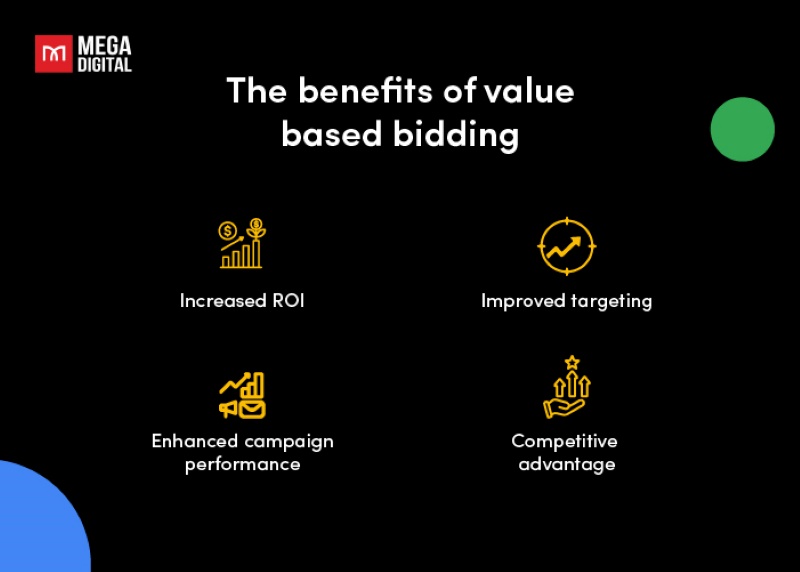
The limitations
While value based bidding strategy offers numerous benefits, there are also potential challenges and drawbacks that businesses should consider:
Value estimation accuracy
Estimating the value of different actions or conversions can be challenging and may involve assumptions and approximations. Inaccurate value estimations can lead to suboptimal bidding decisions and allocation of resources. It requires ongoing monitoring, analysis, and refinement to ensure the accuracy of value estimations.
Competitor bidding dynamics
Value based bidding strategy relies on the assumption that other advertisers are not also bidding based on value. If competitors utilize different bidding strategies or have access to better data, it can impact the effectiveness of this strategy. Competitive bidding dynamics can influence the cost per click and the availability of valuable ad placements, potentially affecting the overall success of the strategy.
How is value based bidding different from other bidding strategies?
Value based bidding differs from other bidding strategies in Google Ads in its focus on the projected value of the conversion rather than the cost per click (CPC). This enables you to bid based on the value of a single action, such as a sale or a lead and helps you reach your desired outcome at the lowest possible cost. Other bidding techniques in Google Ads, such as manual bidding and maximizing bidding, are CPC-focused and do not consider the anticipated value of a conversion.
The table below demonstrates the difference between all the available bidding strategies:
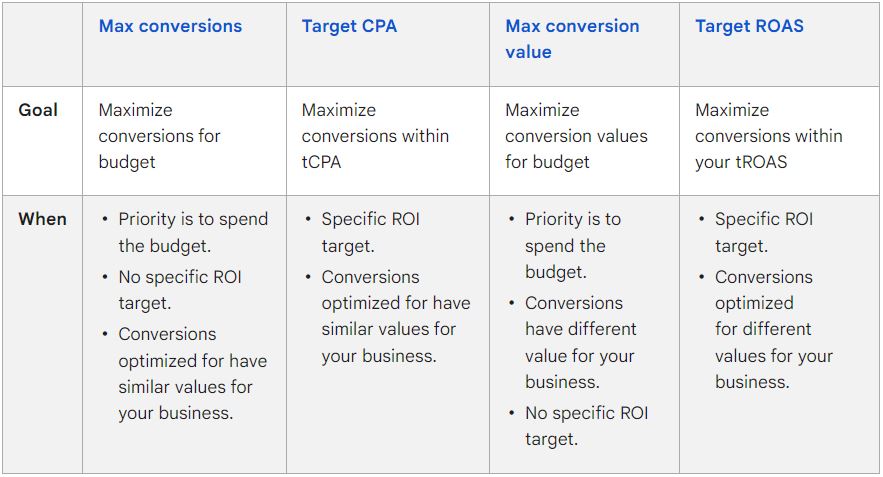
How to set up value based bidding in Google Ads?
To set up in Google Ads, follow the step-by-step guidelines below:
Step 1: Set up conversion tracking in Google Ads
First, you need to set up your conversion tracking for all the events you want to track. Google does provide a guide to set up conversion tracking for your website.
Step 2: Set values for the conversions
Once the conversion tracking is set up, go through the following steps to set up the conversion value.
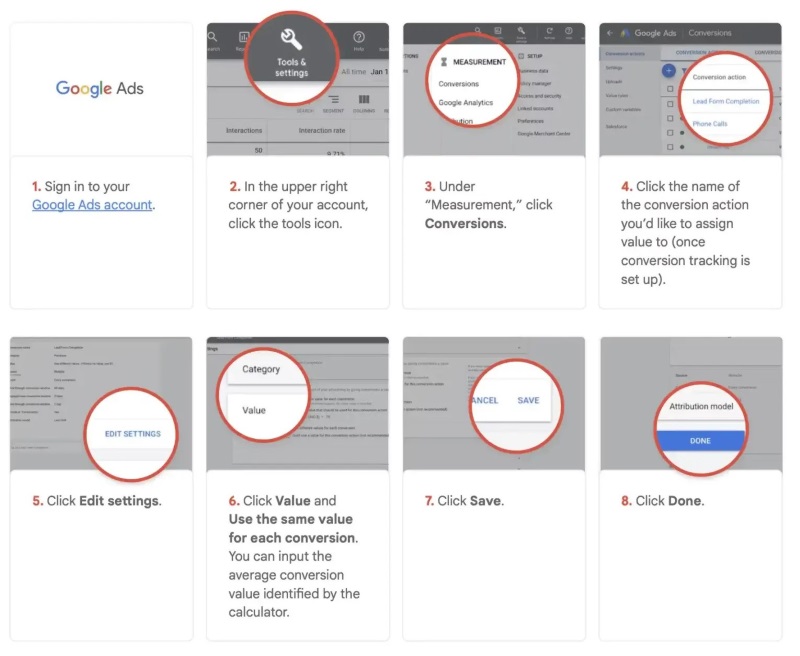
Step 3: Set up value based bidding strategy
Most Google campaign types need at least 15 conversions in the past 30 days. So please wait for a bit. After that, select any of the conversion values or target CPA bid strategy campaign to switch to value based bidding.
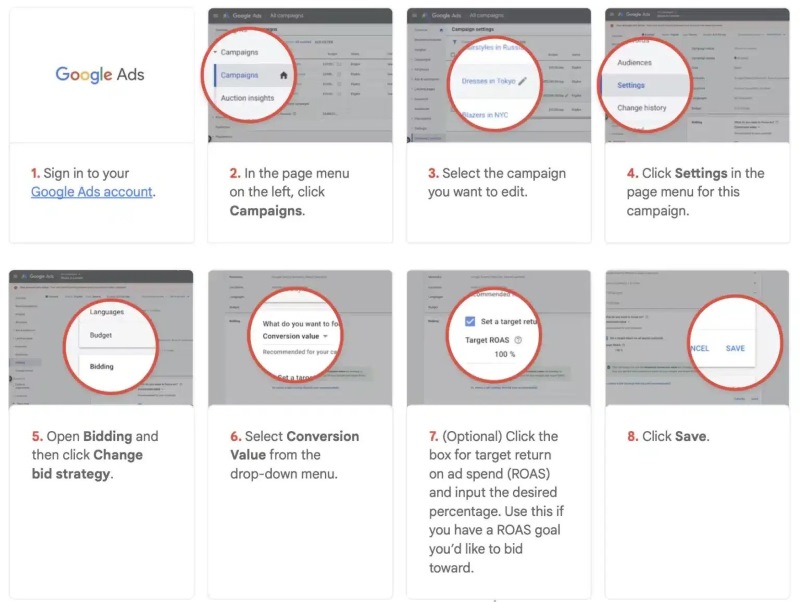
If you want to go with target ROAS, select the checkbox and enter the ROAS value as above. Since there are delays in the conversions, the ROAS target you give should be a little lower than your historical average ROAS number. The value in the column showing conversion value/cost is the value you must consider for tROAS.
Step 4: Apply the bid strategy to specific campaigns or ad groups
Select the campaign or ad group you want to optimize. From there, adjust your bidding options to align with your campaign objectives, ensuring that your budget is allocated efficiently to achieve the desired results.
Value based bidding best practices
To achieve the best results and improve ad performance, you should adhere to a specific advised approach:
Define clear value metrics
Clearly define what constitutes a valuable conversion for your business. This could include purchases, lead form submissions, or other actions. Assign specific monetary values to each conversion type based on its importance to your business.
Set realistic value targets
Establish value based targets, such as Target ROAS (Return on Ad Spend) or Target CPA (Cost per Acquisition), that are attainable and align with your business goals. Unrealistic targets can lead to inefficient bidding.
Regularly review and adjust bids
Continuously monitor campaign performance and make bid adjustments based on actual results. Be prepared to both increase and decrease bids as needed, depending on performance trends and goals.
Experiment with different value metrics
Don’t limit yourself to a single value metric. Experiment with various metrics like Customer Lifetime Value (CLV), profit margin, or average order value (AOV) to determine which aligns best with your campaign objectives.
Blend manual and automated bidding
While automated bidding is indeed powerful, supplement it with manual oversight. Blend automated and manual bidding to fine-tune your strategy and make strategic decisions.
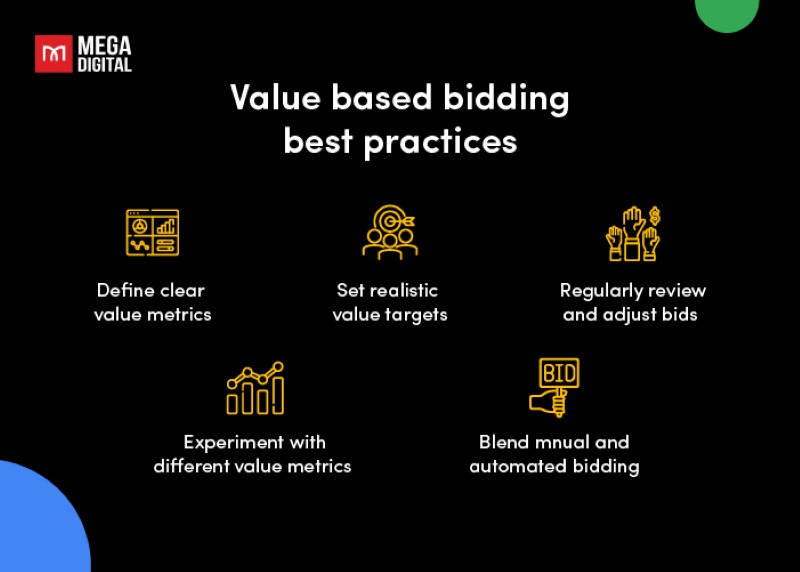
Value based bidding frequent mistakes to avoid
- Analyze performance during the learning period
The system needs time to calibrate and stabilize. Frequent changes or the early deactivation of Smart Bidding might have a detrimental influence on attaining the optimum outcomes. So, please allow at least 1-2 weeks for this process before beginning your analysis of the outcomes.
- Rely solely on automated bidding
While automated bidding strategies can be powerful, relying exclusively on them without manual oversight can lead to missed opportunities and inadequate adjustments. Blend automated and manual bidding for optimal results.
Wrap-up
In conclusion, value based bidding offers businesses a strategic advantage that transcends traditional cost-focused approaches. By aligning bids with the actual value each conversion brings, advertisers can maximize ROI, improve budget efficiency, and reach high-value audiences.
To execute these strategies with confidence, you could rent a Google Ads agency account from a trusted Google Partner, like Mega Digital. With this account, you will have certified consultants fine-tune your campaigns and keep your costs efficient with a service fee as low as 4% of total ad spending. Get started today!









